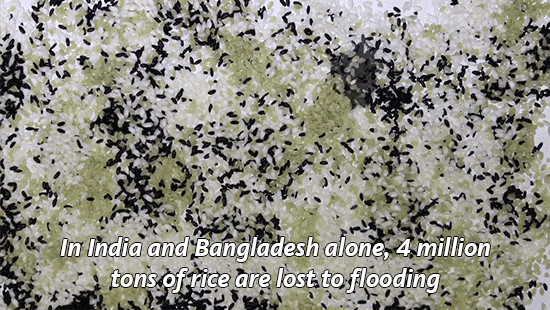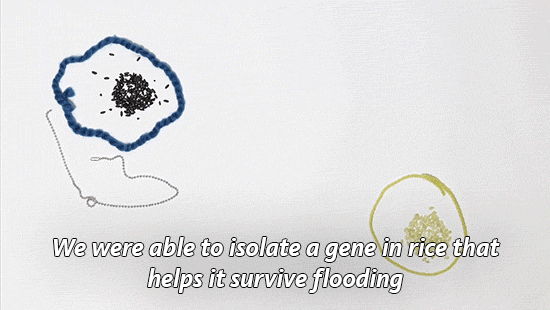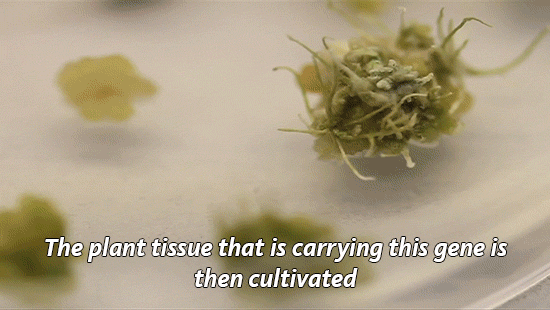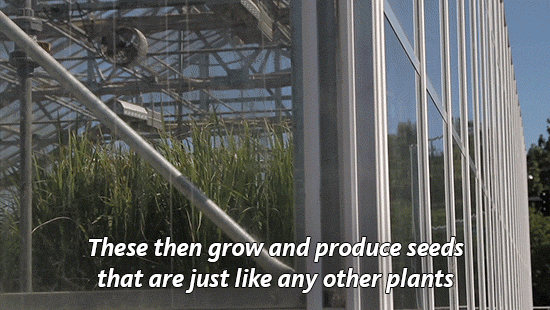Shocking New Role Found For The Immune System: Controlling Social Interactions

Shocking New Role Found for the Immune System: Controlling Social Interactions
In a startling discovery that raises fundamental questions about human behavior, researchers at the University of Virginia School of Medicine have determined that the immune system directly affects – and even controls – creatures’ social behavior, such as their desire to interact with others.
So could immune system problems contribute to an inability to have normal social interactions? The answer appears to be yes, and that finding could have significant implications for neurological diseases such as autism-spectrum disorders and schizophrenia.
“The brain and the adaptive immune system were thought to be isolated from each other, and any immune activity in the brain was perceived as sign of a pathology. And now, not only are we showing that they are closely interacting, but some of our behavior traits might have evolved because of our immune response to pathogens,” explained Jonathan Kipnis, chair of UVA’s Department of Neuroscience. “It’s crazy, but maybe we are just multicellular battlefields for two ancient forces: pathogens and the immune system. Part of our personality may actually be dictated by the immune system.”
Evolutionary Forces at Work
It was only last year that Kipnis, the director of UVA’s Center for Brain Immunology and Glia, and his team discovered that meningeal vessels directly link the brain with the lymphatic system. That overturned decades of textbook teaching that the brain was “immune privileged,” lacking a direct connection to the immune system. The discovery opened the door for entirely new ways of thinking about how the brain and the immune system interact.

(Image caption: Normal brain activity, left, and a hyper-connected brain. Credit: Anita Impagliazzo, UVA Health System)
The follow-up finding is equally illuminating, shedding light on both the workings of the brain and on evolution itself. The relationship between people and pathogens, the researchers suggest, could have directly affected the development of our social behavior, allowing us to engage in the social interactions necessary for the survival of the species while developing ways for our immune systems to protect us from the diseases that accompany those interactions. Social behavior is, of course, in the interest of pathogens, as it allows them to spread.
The UVA researchers have shown that a specific immune molecule, interferon gamma, seems to be critical for social behavior and that a variety of creatures, such as flies, zebrafish, mice and rats, activate interferon gamma responses when they are social. Normally, this molecule is produced by the immune system in response to bacteria, viruses or parasites. Blocking the molecule in mice using genetic modification made regions of the brain hyperactive, causing the mice to become less social. Restoring the molecule restored the brain connectivity and behavior to normal. In a paper outlining their findings, the researchers note the immune molecule plays a “profound role in maintaining proper social function.”
“It’s extremely critical for an organism to be social for the survival of the species. It’s important for foraging, sexual reproduction, gathering, hunting,” said Anthony J. Filiano, Hartwell postdoctoral fellow in the Kipnis lab and lead author of the study. “So the hypothesis is that when organisms come together, you have a higher propensity to spread infection. So you need to be social, but [in doing so] you have a higher chance of spreading pathogens. The idea is that interferon gamma, in evolution, has been used as a more efficient way to both boost social behavior while boosting an anti-pathogen response.”
Understanding the Implications
The researchers note that a malfunctioning immune system may be responsible for “social deficits in numerous neurological and psychiatric disorders.” But exactly what this might mean for autism and other specific conditions requires further investigation. It is unlikely that any one molecule will be responsible for disease or the key to a cure. The researchers believe that the causes are likely to be much more complex. But the discovery that the immune system – and possibly germs, by extension – can control our interactions raises many exciting avenues for scientists to explore, both in terms of battling neurological disorders and understanding human behavior.
“Immune molecules are actually defining how the brain is functioning. So, what is the overall impact of the immune system on our brain development and function?” Kipnis said. “I think the philosophical aspects of this work are very interesting, but it also has potentially very important clinical implications.”
Findings Published
Kipnis and his team worked closely with UVA’s Department of Pharmacology and with Vladimir Litvak’s research group at the University of Massachusetts Medical School. Litvak’s team developed a computational approach to investigate the complex dialogue between immune signaling and brain function in health and disease.
“Using this approach we predicted a role for interferon gamma, an important cytokine secreted by T lymphocytes, in promoting social brain functions,” Litvak said. “Our findings contribute to a deeper understanding of social dysfunction in neurological disorders, such as autism and schizophrenia, and may open new avenues for therapeutic approaches.”
The findings have been published online by the prestigious journal Nature.
More Posts from Contradictiontonature and Others
Molecule of the Day: VX


VX (C11H26NO2PS) is a colourless, odourless, oily liquid under room temperatures. It is a member of the V-series of nerve agents, and is an extremely potent poison - only 0.01 grams of it is needed to kill a person by skin contact. VX was recently implicated in the assassination of Kim Jong-nam, the half-brother of the North Korean leader Kim Jong-un, in Malaysia.
VX is a potent inhibitor of acetylcholinesterase, which breaks down the neurotransmitter acetylcholine into acetic acid and choline. The normal function of the enzyme is to regulate the concentration of acetylcholine within the synaptic cleft, so as to control the frequency of binding of acetylcholine to cholinergic receptors on the postsynaptic cell membrane and hence the transmission of impulses across the synapse.

Consequently, the inhibition of acetylcholinesterase results in a rapid increase in the synaptic concentration of acetylcholine, as the presynaptic knob continues to synthesise it and secrete it into the synaptic cleft. As a result, the cholinergic receptors on the postsynaptic cell membrane are continually stimulated, and a rapid series of action potentials are triggered. This results in muscle spasms and eventual paralysis, leading to death by asphyxiation due to paralysis of the diaphragm.

VX exposure is usually treated using an injection of atropine and pralidoxime. Atropine inhibits certain cholinergic receptors, reducing the binding of acetylcholine to receptors and thus the triggering of action potentials. On the other hand, one end of pralidoxime binds to acetylcholinesterase and the other binds to the phosphate group of VX, which causes the VX molecule to detach from the enzyme together with the pralidoxime molecule (see below). This restores the ability of acetylcholinesterase to hydrolyse acetylcholine, hence reducing its synaptic levels.

VX is synthesised from phosphorus trichloride over multiple steps; first, it is methylated, reacted with ethanol, then transesterified with N,N-diisopropylaminoethanol to produce QL. This is then oxidised with sulfur, and isomerised via heating to produce VX.


The Hubble Space Telescope captured this picture of the wispy remains of a supernova explosion. The dust cloud in the upper center of the picture is the actual supernova remnant. The dense concentration of stars in the lower left is the outskirts of star cluster NGC 1850. Full resolution picture here. More info here. Credit: NASA, ESA, Y.-H. Chu (Academia Sinica, Taipei)



NASA’s Juno Spacecraft Completes Flyby over Jupiter’s Great Red Spot
NASA’s Juno mission completed a close flyby of Jupiter and its Great Red Spot on July 10, during its sixth science orbit.
All of Juno’s science instruments and the spacecraft’s JunoCam were operating during the flyby, collecting data that are now being returned to Earth. Juno’s next close flyby of Jupiter will occur on Sept. 1.
Raw images from the spacecraft’s latest flyby will be posted in coming days.
“For generations people from all over the world and all walks of life have marveled over the Great Red Spot,” said Scott Bolton, principal investigator of Juno from the Southwest Research Institute in San Antonio. “Now we are finally going to see what this storm looks like up close and personal.”
The Great Red Spot is a 10,000-mile-wide (16,000-kilometer-wide) storm that has been monitored since 1830 and has possibly existed for more than 350 years. In modern times, the Great Red Spot has appeared to be shrinking.
Juno reached perijove (the point at which an orbit comes closest to Jupiter’s center) on July 10 at 6:55 p.m. PDT (9:55 p.m. EDT). At the time of perijove, Juno was about 2,200 miles (3,500 kilometers) above the planet’s cloud tops. Eleven minutes and 33 seconds later, Juno had covered another 24,713 miles (39,771 kilometers), and was passing directly above the coiling crimson cloud tops of the Great Red Spot.
The spacecraft passed about 5,600 miles (9,000 kilometers) above the clouds of this iconic feature.
On July 4 at 7:30 p.m. PDT (10:30 p.m. EDT), Juno logged exactly one year in Jupiter orbit, marking 71 million miles (114.5 million kilometers) of travel around the giant planet.
Juno launched on Aug. 5, 2011, from Cape Canaveral, Florida. During its mission of exploration, Juno soars low over the planet’s cloud tops – as close as about 2,100 miles (3,400 kilometers). During these flybys, Juno is probing beneath the obscuring cloud cover of Jupiter and studying its auroras to learn more about the planet’s origins, structure, atmosphere and magnetosphere.
Early science results from NASA’s Juno mission portray the largest planet in our solar system as a turbulent world, with an intriguingly complex interior structure, energetic polar aurora, and huge polar cyclones.
JPL manages the Juno mission for the principal investigator, Scott Bolton, of Southwest Research Institute. The Juno mission is part of the New Frontiers Program managed by NASA’s Marshall Space Flight Center in Huntsville, Alabama, for the Science Mission Directorate.
Lockheed Martin Space Systems, Denver, built the spacecraft. JPL is a division of Caltech in Pasadena




Why we need GMOs to survive climate change
Genetically modified organisms get a bad rap for many reasons, but we’ve actually been genetically altering what we eat since the dawn of human history.
“For 10,000 years, we have altered the genetic makeup of our crops,”explains UC Davis plant pathology professor Pamela Ronald.
“Today virtually everything we eat is produced from seeds that we have genetically altered in one way or another.” (You can read more about Ronald’s thoughts on genetically engineered food here.)
Right now her focus is on rice. It’s one of our basic crops and without it, we would struggle to feed much of the world.
With climate change, we’re seeing an increase in flooding in places like India and Bangladesh, which makes it harder to grow this important food staple.
So Ronald and her lab have developed a flood-tolerant strain of rice. It’s known as Sub1a or “scuba rice” and millions of farmers in South Asia are now growing it in their fields.

Today is National Food Day, a day dedicated to hunger awareness. But as we focus on food insecurity, we need to talk more about how global warming will make the problem worse.
As our climate continues to heat up, it has huge impacts on what foods we are able to grow. Will our crops be able to survive droughts and floods? The University of California leads six labs that are working to develop other climate-resilient crops including chickpea, cowpea and millet.
Find out what other scientists are doing to improve our food.

Finally got the pure Nile Red in solution, just need to evaporate to get the pure dye.
Interesting fact: Nile Red is a solvatochromic dye. What does this mean? Solvatochromism is the ability of a chemical substance to change color due to a change in solvent polarity, so it has different color in different solvents. Also its emission and excitation wavelength both shift depending on solvent polarity, so it fluoresces with with different color depending on the solvent what it’s dissolved in.
In this case it was dissolved in dichloromethane.


Today is World Anaesthesia Day! Here’s a look at the chemistry behind a range of anaesthetics. More info here and here.
Last Week In Science

1. Broad Institute wins CRISPR patent battle
basically UC Berkely has rights to use CRISPR in “all kinds of cells” and Broad has rights in “eukaryotic cells” (yay legal system). Anticipate more legal battles since there are more types of CRISPR techniques
2. Human genome editing gets the OK to prevent “serious heritable diseases and conditions only”
Bioshock likely to happen in 50 years as “serious disease” dwindles in to “mediocre disease” and finally “what the hell let’s shoot fire from our hands”

3. With the EPA at risk of being destroyed, what was life like before the EPA?
4. Congress wants to shift Earth Science away from NASA (and focus on deep space)
4.1 Coders continue to save climate data
5. This years winners of underwater photos

6. Got trash on your power lines? That’s alright just attach a flamethrower to a drone, no worries
7. Fungicides bring us closer to figuring out why all of the bees are dying
7.1 (but who cares right? we can just make quadcopters do all the work)
8. Australia is HOT AS BALLS

9. Aztecs probably died off from salmonella outbreak
10. Our genetic past and present sanitary world lead to increased autoimmunity and allergy
10.1 Getting the right microbiome early on is so important for health
11. New Zealand on a new continent might make maps include it more often

12. Now you realize how slow the speed of light is on a cosmic scale
13. Meta-Analysis shows Vitamin D supplementation provides “modest protective effect” from respiratory infections like the flu or cold
14. Watch Yosemite’s Horsetail and its annual “FireFall” (image via Robert Minor)

15. Trump’s press conference makes people wonder if he is mentally ill and if we should start testing old ass presidents for dementia
16. He continue’s to spew more anti-vaccine bullshit, showing his ignorance of science and RFK Jr.’s scam needs “just one study” to change his mind
16.1 more than 350 organizations write to Trump to assure his feeble mind that vaccines are safe
17. Simple fractal patterns are key to Rorschach test

18. Imagine shining a light somewhere on your body and microscopic bots deliver drugs there
19. How flat can a planet be?
20. Triangulene created for the first time
Who needs carefully planned chemical reactions when you can just blast hydrogens off with electricity?

21. All of the nerdy. Valentine’s. you. will. ever. need.
22. Help find Planet 9 in your spare time
22.1 Don’t have time? then do science while your computer is idle!


IN THE MIX
Matti Koivisto, an undergraduate student working in the laboratory of Kari Haajanen at Turku University of Applied Sciences, designs solutions similar to this one to detect the bacteria Escherichia coli. He uses a dye called rhodamine 6G, which has a strong orange color when dissolved in ethanol. In solution, the dye separates into negatively and positively charged ions, the latter of which are largely responsible for the dye’s color. Negatively charged molecules on the outer membranes of E. coli attract the dye’s positive ions. This interaction causes the dye to change color to a pinkish hue, and the level of color change allows Koivisto to gauge how many of the bacteria are present.
Submitted by Matti Koivisto
Do science. Take photos. Make money: Enter our monthly photo contest here for your chance to win!
Related C&EN content:
How dyes in mouse feces help track insects
Using an ink-jet printer to simplify analytical chemistry










Giant Artwork Reflects The Gorgeous Complexity of The Human Brain
The new work at The Franklin Institute may be the most complex and detailed artistic depiction of the brain ever.
Your brain has approximately 86 billion neurons joined together through some 100 trillion connections, giving rise to a complex biological machine capable of pulling off amazing feats. Yet it’s difficult to truly grasp the sophistication of this interconnected web of cells.
Now, a new work of art based on actual scientific data provides a glimpse into this complexity.
The 8-by-12-foot gold panel, depicting a sagittal slice of the human brain, blends hand drawing and multiple human brain datasets from several universities. The work was created by Greg Dunn, a neuroscientist-turned-artist, and Brian Edwards, a physicist at the University of Pennsylvania, and goes on display at The Franklin Institute in Philadelphia.
“The human brain is insanely complicated,” Dunn said. “Rather than being told that your brain has 80 billion neurons, you can see with your own eyes what the activity of 500,000 of them looks like, and that has a much greater capacity to make an emotional impact than does a factoid in a book someplace.”
To reflect the neural activity within the brain, Dunn and Edwards have developed a technique called micro-etching: They paint the neurons by making microscopic ridges on a reflective sheet in such a way that they catch and reflect light from certain angles. When the light source moves in relation to the gold panel, the image appears to be animated, as if waves of activity are sweeping through it.
First, the visual cortex at the back of the brain lights up, then light propagates to the rest of the brain, gleaming and dimming in various regions — just as neurons would signal inside a real brain when you look at a piece of art.
That’s the idea behind the name of Dunn and Edwards’ piece: “Self Reflected.” It’s basically an animated painting of your brain perceiving itself in an animated painting.
To make the artwork resemble a real brain as closely as possible, the artists used actual MRI scans and human brain maps, but the datasets were not detailed enough. “There were a lot of holes to fill in,” Dunn said. Several students working with the duo explored scientific literature to figure out what types of neurons are in a given brain region, what they look like and what they are connected to. Then the artists drew each neuron.
Dunn and Edwards then used data from DTI scans — a special type of imaging that maps bundles of white matter connecting different regions of the brain. This completed the picture, and the results were scanned into a computer. Using photolithography, the artists etched the image onto a panel covered with gold leaf.
“A lot of times in science and engineering, we take a complex object and distill it down to its bare essential components, and study that component really well” Edwards said. But when it comes to the brain, understanding one neuron is very different from understanding how billions of neurons work together and give rise to consciousness.
“Of course, we can’t explain consciousness through an art piece, but we can give a sense of the fact that it is more complicated than just a few neurons,” he added.
The artists hope their work will inspire people, even professional neuroscientists, “to take a moment and remember that our brains are absolutely insanely beautiful and they are buzzing with activity every instant of our lives,” Dunn said. “Everybody takes it for granted, but we have, at the very core of our being, the most complex machine in the entire universe.”
Image 1: A computer image of “Self Reflected,” an etching of a human brain created by artists Greg Dunn and Brian Edwards.
Image 2: A close-up of the cerebellum in the finished work.
Image 3: A close-up of the motor cortex in the finished work.
Image 4: This is what “Self Reflected” looks like when it’s illuminated with all white light.
Image 5: Pons and brainstem close up.
Image 6: Putkinje neurons - color encodes reflective position in microetching.
Image 7: Primary visual cortex in the calcarine fissure.
Image 8: Basal ganglia and connected circuitry.
Image 9: Parietal cortex.
Image 10: Cerebellum.
Credit for all Images: Greg Dunn - “Self Reflected”
Source: The Huffington Post (by Bahar Gholipour)
-
 ishillreadlater reblogged this · 6 years ago
ishillreadlater reblogged this · 6 years ago -
 sweeterdead reblogged this · 8 years ago
sweeterdead reblogged this · 8 years ago -
 re-wiredbrain-blog liked this · 8 years ago
re-wiredbrain-blog liked this · 8 years ago -
 legabed liked this · 8 years ago
legabed liked this · 8 years ago -
 jenericalname reblogged this · 8 years ago
jenericalname reblogged this · 8 years ago -
 gold-34-heart liked this · 8 years ago
gold-34-heart liked this · 8 years ago -
 thewitchlingsway reblogged this · 8 years ago
thewitchlingsway reblogged this · 8 years ago -
 punkgrocerydad reblogged this · 8 years ago
punkgrocerydad reblogged this · 8 years ago -
 rejectedbellybuttonpiercing reblogged this · 8 years ago
rejectedbellybuttonpiercing reblogged this · 8 years ago -
 mangoachaar reblogged this · 8 years ago
mangoachaar reblogged this · 8 years ago -
 eulogist liked this · 8 years ago
eulogist liked this · 8 years ago -
 harmonic-motion reblogged this · 8 years ago
harmonic-motion reblogged this · 8 years ago -
 transwhore-blog1 liked this · 8 years ago
transwhore-blog1 liked this · 8 years ago -
 medustf reblogged this · 8 years ago
medustf reblogged this · 8 years ago -
 droxtal liked this · 8 years ago
droxtal liked this · 8 years ago -
 harmonic-motion liked this · 8 years ago
harmonic-motion liked this · 8 years ago -
 suchanexquisitelie reblogged this · 8 years ago
suchanexquisitelie reblogged this · 8 years ago -
 suchanexquisitelie liked this · 8 years ago
suchanexquisitelie liked this · 8 years ago -
 lucascruzsouza-blog liked this · 8 years ago
lucascruzsouza-blog liked this · 8 years ago -
 psyxiao-blog reblogged this · 8 years ago
psyxiao-blog reblogged this · 8 years ago -
 psyxiao-blog liked this · 8 years ago
psyxiao-blog liked this · 8 years ago -
 mysterysciencegirlfriend3000 reblogged this · 8 years ago
mysterysciencegirlfriend3000 reblogged this · 8 years ago -
 queenofeire liked this · 8 years ago
queenofeire liked this · 8 years ago -
 amarillab reblogged this · 8 years ago
amarillab reblogged this · 8 years ago -
 amarillab liked this · 8 years ago
amarillab liked this · 8 years ago -
 hospitalaesthetic liked this · 8 years ago
hospitalaesthetic liked this · 8 years ago -
 collector-of-stuff reblogged this · 8 years ago
collector-of-stuff reblogged this · 8 years ago -
 jeff-uh-son liked this · 8 years ago
jeff-uh-son liked this · 8 years ago -
 quanminhdo-blog reblogged this · 8 years ago
quanminhdo-blog reblogged this · 8 years ago -
 imshikha reblogged this · 8 years ago
imshikha reblogged this · 8 years ago -
 vrycurious reblogged this · 8 years ago
vrycurious reblogged this · 8 years ago -
 vrycurious liked this · 8 years ago
vrycurious liked this · 8 years ago -
 braininavault-blog reblogged this · 8 years ago
braininavault-blog reblogged this · 8 years ago
A pharmacist and a little science sideblog. "Knowledge belongs to humanity, and is the torch which illuminates the world." - Louis Pasteur
215 posts

